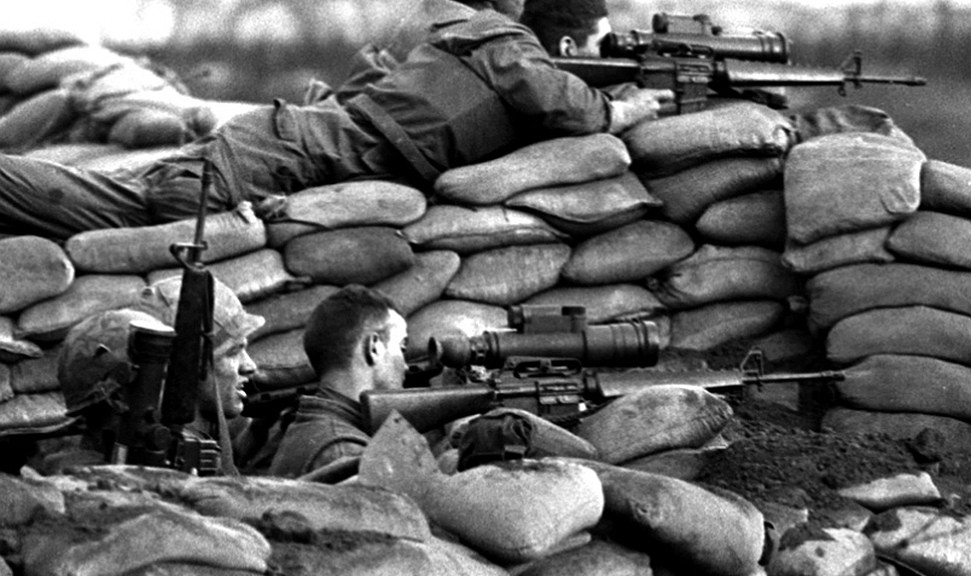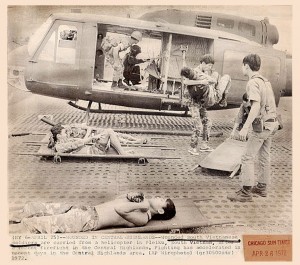Battle of Hamburger Hill (May 10-20, 1969)
The Battle of Hamburger Hill was fought between the U.S. and ARVN against PAVN forces from May 10 to 20, 1969. It took place on Hill 937 (as it was 937-meter above the sea) which would be later known as “Hamburger Hill” due to its grinding nature as a reference to a similar battle called “The Battle of Pork Chop Hill” during Korean war.
The battle was part of Operation Apache Snow with the goal of clearing PAVN from the remote A Shau Valley in Thua Thien – Hue province, South Vietnam. Although the hill was of little strategic value, U.S. commanders ordered direct assaults, causing unnecessarily high casualties, only to abandon it soon after on June 7. As a result, the battle caused lots of public outrage and controversy when reaching Washington.
Some consider this battle as a turning point for the U.S. in Vietnam as the conflict became more and more unpopular at home. Many American people felt the Battle of Hamburger Hill was such a pointless battle in a meaningless war. In fact, many started to doubt whether they should be involved in Vietnam and the anti-war movements were reaching its peak. Under extensive public and political pressure, General Creighton Abrams dropped “maximum pressure” in favor of “protective reaction” policy to lower casualties, while at the same time President Nixon announced the first troop withdrawal from South Vietnam.
Easter Offensive (March 30 – October 22, 1972)
The Easter Offensive was a conventional offensive conducted by the PAVN against the ARVN and U.S. army from March 30 to October 22, 1972 following the failed South Vietnamese Operation Lam Son 719 in 1971. This largest invasion since the Korean War was launched in an attempt to influence the 1972 U.S. presidential election as well as to improve their negotiating position at the peace talks in Paris.
The PAVN launched the attacks on 3 fronts simultaneously: Quang Tri – Hue, Kon Tum and Binh Long where the battle of An Loc took place. Despite their initial success, PAVN’s advances were hindered by heavy casualties, inadequate tactics and particularly American destructive air power. When PAVN troops halted on all fronts, ARVN forces began to counter-attack and quickly re-captured Quang Tri and other lost bases.
Although the Easter Offensive turned out to be another military defeat, the North Vietnamese did achieve two important goals. First, they continued to occupy approximately 10% valuable territory of South Vietnam which would remain theirs after the Paris Peace Accord. That was crucial for their next and final offensive in 1975. Second, they gained a better bargaining position as both North & South Vietnamese were now more willing to make concessions during the peace negotiations in Paris.
Battle of Xuan Loc (April 9 – 20, 1975)
The Battle of Xuan Loc, known as “the last stand at Xuan Loc” – the last major battle of the Vietnam War, began on April 9, 1975 and ended on April 20, 1975 in the town of Xuan Loc, Dong Nai Province, South Vietnam. The battle was the last-ditch effort of the last military units of the ARVN, namely the 18th Infantry Division “The Super Men”, to stop PAVN’s progress and save South Vietnam after devastating defeats in the Central Highlands as well as major cities of Hue and Da Nang.
Despite initial success in keeping the Viet Cong out of the town, the 18th Infantry Division was eventually forced to withdraw after Xuan Loc was totally isolated and its remaining units awfully hammered. The Battle of Xuan Loc was a terrible blow not only to the ARVN who lost almost all their units after the costly defeat but also to South Vietnamese leadership as President Thieu resigned on April 21. For the PAVN, they had already controlled almost two third of South Vietnam’s territory and most importantly, the gateway to Saigon was now widely open.
Fall of Saigon (April 30, 1975)
The decisive victory in Xuan Loc opened the way for PAVN to encircle Saigon. By April 27, there were 100,000 PAVN troops around the city. The ARVN had around 60,000 troops left for the defence of their capital. However, most of them either joined the mass exodus getting out of the city or were too battered and leaderless to fight. The fate of Saigon and South Vietnam was quickly sealed, preceded by the final evacuations from the U.S. and its allies. The Vietnam war was finally ended.
The fall of Saigon and South Vietnam led to the reunification of Vietnam under the Communist rule with the city renamed after their revolutionary leader, Ho Chi Minh.

